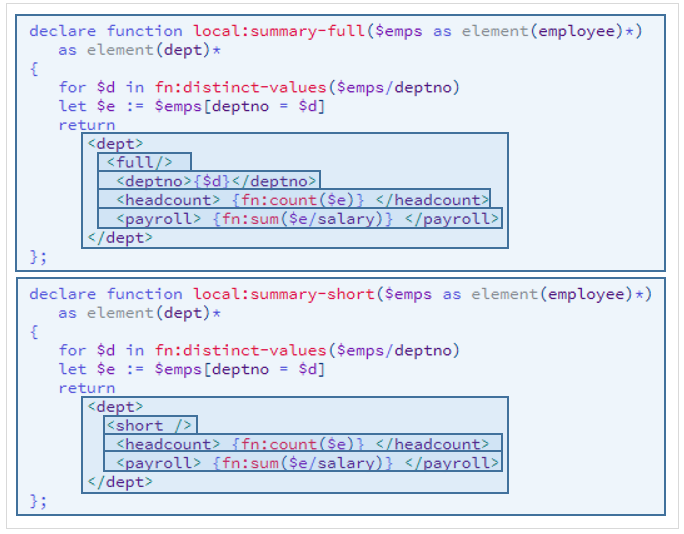In my first post on
Comparing XQuery with DeltaXignia Core
, we used a flat sequence of span elements, where each element represented an XQuery language token, with a class attribute showing the token type. Whilst this proved simple and effective, in this post I take things a stage further to allow a more accurate/robust comparison of the XQuery by using an additional XSLT template to the input XSLT filter to add some structure to this set of tokens.
The original XQuery source (input ‘A’) used for this exercise is shown below, each recognized token-type is represented by a different foreground color, note that there are also many ‘whitespace’ tokens interspersed with the visible tokens.

In the code above I’ve used rectangles to highlight the structure that we are going to add so that they enclose each set of tokens to be wrapped. Specifically, the language structures that we’re looking to wrap are:
- function declarations
- element constructors with separate start and end tags
- self-closed element constructor tags
The new ‘wrap-spans’ XSLT template is added to the existing XSLT filter, xquery2xml.xsl and then called from the entry-point template, as shown below:



